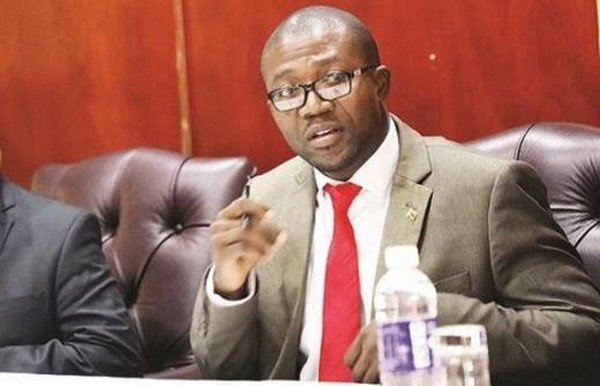
THE battle to reclaim tourism markets have accelerated since governments eased Covid-19 pandemic restrictions this year. In an interview with our business reporter Freeman Makopa (FM) this week, Environment, Climate, Tourism and Hospitality Industry minister Mangaliso Ndlovu (MN) tells us the strides the country has made. Below are excerpts of the interview:
FM: What is the outlook for the tourism industry?
MN: Since the beginning of the year, global tourism has continued to exhibit signs of consistent recuperation from the adverse consequences of the Covid-19 pandemic. Current trends for Zimbabwe have shown recovery, which has been supported by the bouncing back of worldwide inbound travel and growth in domestic tourism.
FM: How has the industry performed this year?
MN: The first nine months of 2022 saw a 165% rise in tourist arrivals. Arrivals increased to 693 498 during the period, from 261 415 during the same period in 2021. This is more than double the number of international arrivals received during the first nine months of 2021.
FM: This means hotel room occupancies have also improved
MN: Yes, on average, occupancies for the first nine months of 2022 grew by 21 percentage points. Occupancies rose from 21% in 2021 to 42% in 2022. Overall, this performance has been reinforced by domestic tourism, which is dominant, contributing 95% of tourism business in 2022.
FM: How has Zimbabwe managed to drum up domestic tourism during this difficult period, economically?
- Why we fall for disinformation
- Young entrepreneur dreams big
- Chibuku NeShamwari holds onto ethos of culture
- Funding for researchers
Keep Reading
MN: Like any other country, Zimbabwe is traversing through the recovery from the Covid-19 pandemic and the on-going war in Ukraine. These have affected global economies, travel and trade. Given this economic situation, the tourism sector is implementing the National Tourism Recovery and Growth Strategy (TRGS), which is driving the growth of tourism. This is mainly through campaigns to accelerate meetings, conferences and exhibitions (MICE) and domestic tourism. The ZimBho, MeetInZim and InvestInZim campaigns have stimulated domestic and business tourism.
FM: Please share the investment levels into the sector attributable to these campaigns
MN: These campaigns have contributed to tourism growth doubling for January to September 2022 as alluded to earlier. There have been investments totalling US$306,7 million during the period, from US$90,4 million. This was mostly invested into accommodation facilities and vehicle hire.
FM: How do you plan to sustain this growth trajectory?
MN: The tourism sector is guided by the National Development Strategy (NDS) 1, 2021 to 2025 and the TRGS. NDS1 agitates for the growth of the tourism sector through increased investment into diversified products, while TRGS seeks to grow the tourism economy to US$5 billion by 2025. The ministry has the following programmes in place, in its endeavour to achieve the NDS1 goals: product development and diversification, instituting ease of doing business reforms, climate proofing of the tourism sector and establishing a tourism satellite account.
FM: Tell us about the role of the private sector in these initiatives
MN: Zimbabwe’s tourism sector is government-led and private sector driven. The ministry and the private sector already have synergies to promote the country through bilateral agreements signed with other countries in the region and abroad. The ministry is currently implementing memoranda of understanding on cooperation in the field of tourism with South Africa, Zambia, Malawi, Rwanda and the Democratic Republic of Congo. These provide the public and private sectors the opportunity to jointly market and promote destinations, exchange of programmes for professional in the sector and joint collaboration of private sector associations. Government also supports private sector participation at international travel fairs through subsidising participation fees of operators. The ministry through the Zimbabwe Tourism Authority (ZTA), jointly with the private sector, participates annually at fairs such as World Travel Market in London, International Travel Bourse in Berlin, Germany and Indaba Travel Fair in Durban, South Africa.
FM: What else is the government doing?
MN: Over and above the synergies, the ministry is establishing market presence in the country’s key tourism source markets. Two tourism attachés were deployed in August and September 2022 to China and the United Arab Emirates. An additional nine tourism attachés were recently appointed and are expected to be deployed in the first quarter of 2023 to Germany, France, the United Kingdom, the United States of America, India, South Africa, China and Japan. Physical presence in key source markets and the joint synergies with the private sector will aid government in promoting the destination internationally, attracting more tourists to the country.
FM: Tell us about financial support to the industry.
MN: The government of Zimbabwe has put in place several incentives to help the tourism sector. These include duty rebates on capital equipment for use in tourism development zones. We also have SI 10 of 2022, which spells out rebate on duty for safari vehicles and tour buses and SI 279 of 2019, which spells out rebates in respect of new capital equipment for expansion, modernisation and renovation of hotels and restaurants within hotels.
The funding also supports boat equipment imports, among others. There are also tax breaks in tourism development zones and tax exemptions for investments into the Victoria Falls tourism special economic zone.
FM: What are the developments on the electricity front, with regards to tourism?
MN: Electricity and water are already subsidised by the government. As a result, Zimbabwe has one of the cheapest utilities in the Sadc region in this respect. The government of Zimbabwe in 2018 launched the National Tourism Masterplan, which is an overarching guide to the development of tourism in Zimbabwe. The master plan identified potential tourism nuggets to grow new tourist attractions in Zimbabwe. The plan has identified 11 tourism development zones in Harare, Eastern Highlands, Chimanimani, Gonarezhou, Limpopo, Great Zimbabwe, Midlands, Bulawayo, Victoria Falls, Kariba and Mavhuradonha. Government has put in place incentives to support investments into special economic zones and tourism development zones that investors can take advantage of.
The national tourism policy agitates for an enabling environment to attract investment into the sector. It also uses tourism to attract foreign direct investment into the country. At the same time, the government will ensure the industry is protected from disinvestment through primary and secondary legislation.
FM: Are you happy with accessibility?
MN: Accessibility is the backbone of the growth of tourism destinations. And air accessibility contributes significantly to the growth of regional and international tourist arrivals to any destination. Air Zimbabwe, therefore, plays a critical role in providing direct access to Zimbabwe from key source markets and an instrumental role in national identity. The airline connects Harare with local destinations such as Victoria Falls. To strengthen the role of Air Zimbabwe in connecting travellers, the government has allowed private sector players such as Fasjet and Kuva Air to fly from Harare to Bulawayo, Victoria Falls and Kariba. We are fully behind the capacitation of the airline and the massive investment in the expansion of the ports of entry.
FM: We have seen more airlines returning to this market. Please share with us what has been happening
MN: The cross-cutting role of infrastructure development, such as the expansion of airports has a huge impact on all sectors of the economy. Airport expansion will boost the country’s growth and transformation in trade and tourism as part of strides. Airport expansion, as seen with at Victoria Falls International Airport, will attract new aircrafts and airlines.
The expansion of Victoria Falls International Airport saw African airlines like Ethiopian Airlines, Air Botswana, Fastjet, Airlink and Kenya Airways increasing flight frequencies to the resort town.
It also attracted new airlines like Eurowings from Germany and Mack Air from Botswana.
This also increased the airport’s passenger handling capacity from 500 000 a year to about 1,5 million.
Expansion will, therefore increase regional and international tourist arrivals into the country, tourism receipts and the sector’s contribution to gross domestic product as well as attainment of the US$ 5billion tourism sector by 2025.






